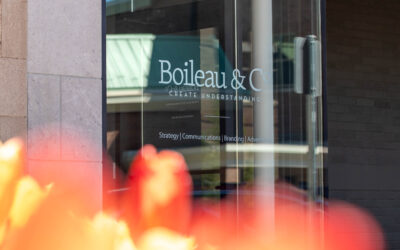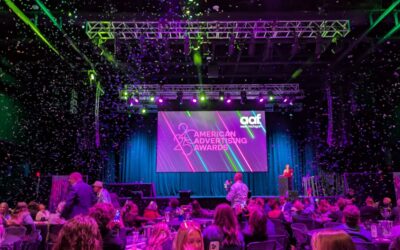From Herman-Miller to honeybees, Dan Broersma recaps his favorite sustainability stories from his tenure in the industry.
Transcript:
Vince Boileau: Hey friends! Welcome back to the Coffee Klatsch — our series where we bring on people who we think are interesting to talk about new ways of thinking, insights and things that you can put to practice in your business. Today on the show, I’ve got Dan Broersma, who is a Sustainability Manager for the City of Holland. Welcome to the show. Our topic today is creative approaches to sustainability. The floor is yours. Tell us some stories. I’d love to hear what you’ve seen in your experience.
Dan Broersma: I’ve seen a lot, and I’ve actually helped with a few of these. And it always has to deal with partnerships. We would have a waste product and we’re throwing it away. The first thing [we thought was] “Yes, well it’s because there’s no recycling market for it.” So the next question is, okay, is there another use for this product? This particular fabric you use two thirds of the roll and there’s one third left. It’s not big enough to make what you’re making so you need to — you know, [you say] “Okay, well, I just throw that away.” We took a look at this fabric and we found, actually, a non-profit in Haiti that was actually employing women to make bags and just different materials out of this used fabric and then sent [them] back to sell, [and] that would continue their mission in Haiti. By the time I left I know they had just bought, like, I want to say 12 to 15 more sewing machines. That’s one, but it shows the partnership. They had a need. You could fill that need.
VB: Not only are we solving, you know, an environmental [issue] but we’re also meeting the social need.
DB: And it all boils down to starting to ask the question. There was a powder paint that came off of a product [at Herman-Miller] and a couple of us were looking at this and we were throwing away just gobs of this stuff. One day we were sitting down, we were like, “Okay wait a minute. It looks like concrete.” So we were able to integrate it into a concrete block that could go into the bottom of a file cabinet that would not let the file cabinet — they’re a counterweight. So it becomes a part of the product.
VB: It wasn’t a coating on a weight, it was the — all of that became the weight itself. That’s interesting. It reminds me of the bees. Did you work on the bees?
DB: I did not work on the bees. That was before my time.
VB: That was before your time?
DB: It was before my time but that is a great story. So where it started was — so the
greenhouse or chair factory that’s over in Holland, when they were bringing customers in — because it’s a customer location — they were getting bothered by wasps. Instead of pulling out the spray gun to kill them they figured out that by bringing in honeybees, which are a competitor to those wasps, [they] would crowd them out. So they brought in a beekeeper. It took care of the wasp problem and oh but they had a byproduct, which is honey, that they would give the customers in little jars when they would come through and actually tell this story.
VB: That’s fascinating. That was like 20 years ago, too.
DB: Yeah, it was. Like I said, it was before my time.
VB: Yet another example of this type of thinking that, you know, is — it’s already happening in West Michigan and it has been happening. And I feel like there’s a lot of great pushes towards sustainability now, and we’re just like, “Yeah, we’ve we’ve been doing it.” You know? Like, let us let us do our thing.
DB: Right, exactly we’re doing our thing, and then, “Oh, we need a new recycling cart for the city.” Okay, that’s nice. We’re gonna put all these big plastic carts out. We were lucky enough to have a company like Cascade Engineering that was going down this road anyway, and the folks at Cascade were able to give us a great product and now all of our bins — not just the recycling bins — are made out of part of the materials that goes into the recycling bins.
VB: And what a cool company, too. If you, you know, if you haven’t researched Cascade [Engineering], they have just amazing energy and waste elimination programs, have amazing social programs for their employees. That was a really good idea for you guys to find them and make sure that we can work [with them].
DB: What’s really cool about that: when we started asking the questions of putting that into there, one thing I didn’t think about until just now while we’re talking is, Republic took it so we have a job there, and then Republic sold the material to Padnos and Padnos repackages, reground it and everything else, and then gave it to Cascade. So how many jobs — talk about a circular economy but just local, just our own Holland carts are. Now that’s out of the box thinking!
VB: Yeah, that’s awesome. Well I think that’s about all the time we’ve got. Thank you for joining us today. I really appreciate it.
DB: Yeah, thanks for having me. It’s been fun.

